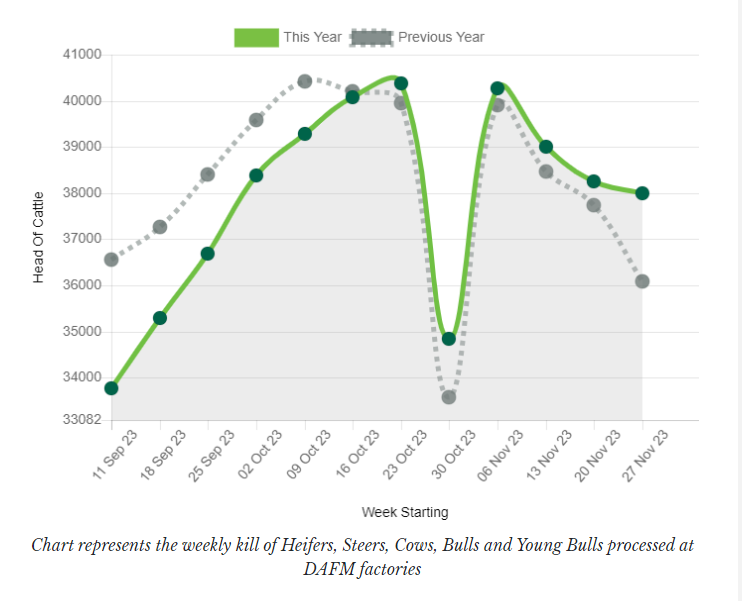The weekly cow kill has remained above 11,000 head for the past four consecutive weeks, according to latest figures from the Department of Agriculture, Food and the Marine (DAFM).
To put this into perspective, despite last year seeing a high overall cow kill, the weekly cow supplies only surpassed 11,000 head on two seperate weeks in 2022, mid November and early December.
The majority of the cows being slaughtered are dairy cows coming direct from the parlour. In the week ending Sunday, December 3, over 66% of the cows slaughtered graded a P.
The table below gives an overview of the beef kill for week 48 of this year versus the same week of last year and the cumulative kill this year compared to last year:
Category Week ending
3-Dec-23Equivalent
Last YearCumulative
2023Cumulative
2022Young bulls 2,852 3,134 107,532 122,554 Bulls 442 410 26,203 26,466 Steers 12,747 12,190 650,579 672,078 Cows 11,596 10,769 381,770 380,219 Heifers 10,350 9,582 454,637 469,063 Total 37,987 36,085 1,620,721 1,670,380
As can be seen from the table above, the supply of all types of cattle has fallen to date this year with the exception of cows, which numbers have increased slightly.
The cumulative beef kill to date this year just over 1.62 million head. This is just under 50,000 head below the same time period of 2022.
Young bull supplies increased by over 500 head last week to 2,852 – but a look at the cumulative young bull kill shows that young bull supplies are falling. This is partly due to market preference for steer beef.
The graph below shows how weekly beef kills have been comparing to last year:

While weekly cattle supplies have been in decline since early November, as the graph above indicates – weekly kills are remaining larger in numbers than last year.
This is in line with the Bord Bia forecast of a higher weekly kill in the final quarter of this year and first quarter of next year.
Poor weather conditions over the summer reduced thrive in cattle which is resulting in a delay in the slaughter date for many cattle.
